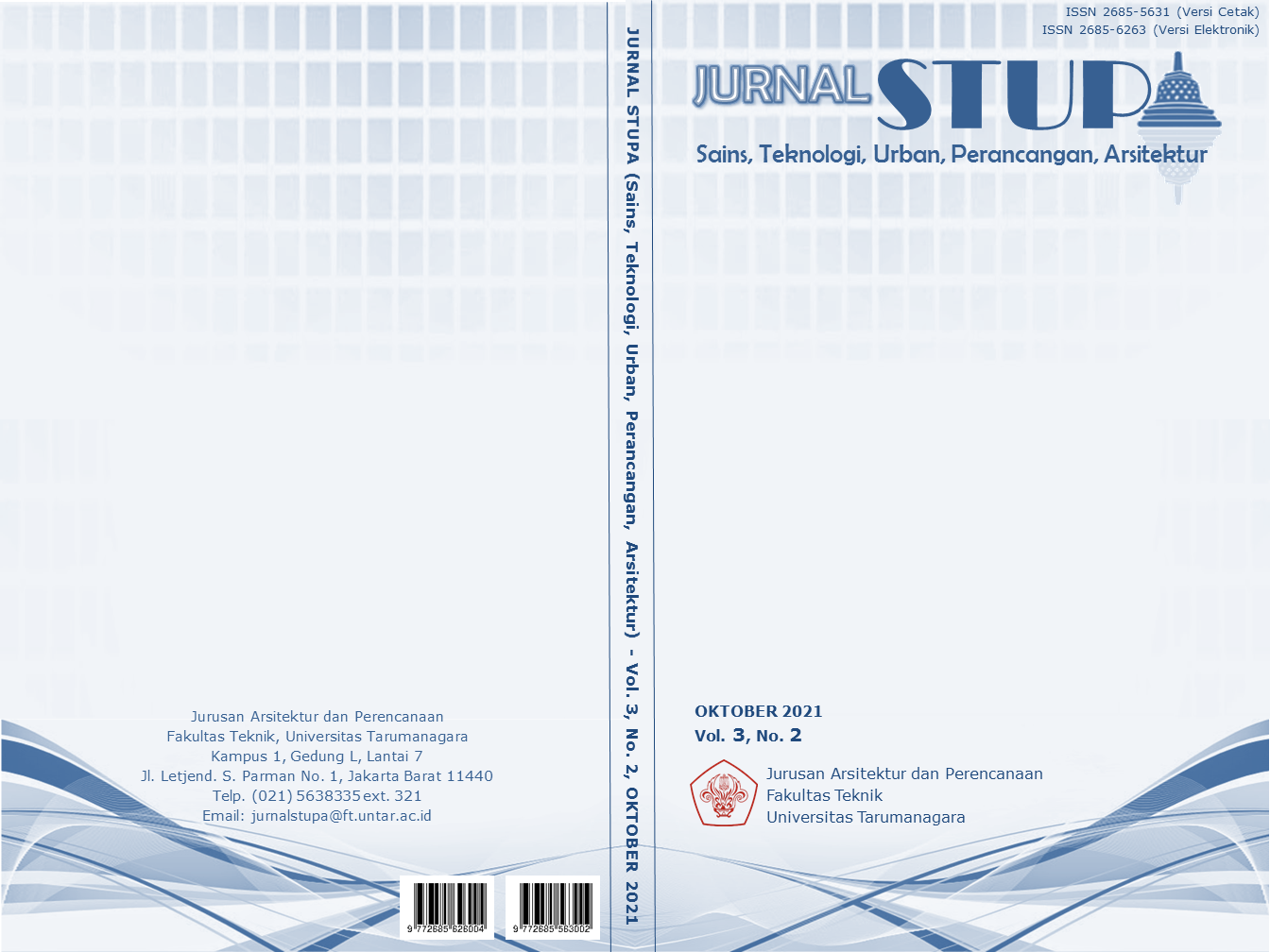PROGRAM KOEKSISTENSI MANUSIA DENGAN ORANGUTAN BORNEO DI HUTAN LINDUNG SAMBOJA LESTARI, KUTAI KARTANEGARA, KALIMANTAN TIMUR
Main Article Content
Abstract
The increase in human population directly impacts the rise of housing needs, resulting in the expansion of human development to other parts of the planet. At some point, these developments might enter wildlife habitats and conservation areas which could cause harm to conservation efforts and the general livelihood of the people. This phenomenon can be expected to occur in the development of Indonesia’s New Capital in North Penajam Paser and Kutai Kartanegara, East Kalimantan, where one of Indonesia’s endemic and critically endangered species makes their home, the Bornean Orangutans. The idea of this experimental project of human-wildlife coexistence gives hope as dwellings for the ever-growing human population while learning to protect and connect with the Orangutans, which also doubles as an in-situ conservation facility in the sanctuary forest of Samboja Lestari. The design method used is bio-inspired by the Orangutans’ wisdom in the ways of the tropical rainforest. The design produces modular dwelling units for researchers, eco-tourist/volunteers, and students; configured to fulfill the spatial needs for both human and wildlife users.
Keywords: Bornean Orangutans; Conservation; Inter-species Coexistence; Modular Dwellings; New Capital.
Abstrak
Bertambahnya jumlah manusia berdampak pada penambahan kebutuhan tempat tinggal, sehingga terjadi ekspansi permukiman manusia ke seluruh penjuru Bumi. Pada satu titik, pembangunan tersebut dapat memasuki ranah habitat dan konservasi satwa liar yang dapat merugikan baik bagi upaya konservasi alam, maupun bagi keberlangsungan kehidupan manusia. Fenomena tersebut dapat diprediksikan terjadi pada rencana pembangunan IKN (Ibu Kota Negara) Indonesia baru di Penajam Paser Utara dan Kutai Kartanegara, Kalimantan Timur, dimana salah satu spesies endemik terancam punah Indonesia berada, yaitu Orangutan Borneo.Usulan proyek eksperimental koeksistensi antar spesies ini diharapkan dapat menjadi dwelling bagi manusia yang kian berkembang untuk belajar melindungi dan memahami Orangutan, dimana proyek ini juga sebagai salah satu fasilitas pendukung upaya konservasi in situ di hutan lindung Samboja Lestari. Metode yang digunakan berupa bio-inspired dari cara hidup Orangutan yang lebih bijak dalam hidup di hutan hujan tropis. Hasil dari desain berupa unit-unit dwelling moduler bagi ilmuwan, eco-tourist/relawan lingkungan, dan pelajar; dikonfigurasikan agar dapat memenuhi kebutuhan ruang baik bagi manusia maupun satwa liar.
Article Details
References
Abram et al. (2015). Mapping perceptions of species' threats and population trends to inform conservation efforts: the Bornean orangutan case study [Electronic Version]. Diversity and Distributions, 21(5), 487-499.
Ancrenaz et al. (2016). Pongo pygmaeus. The IUCN Red List of Threatened Species 2016: e.T17975A123809220. Diunduh pada tangal 25 Maret 2021 dari https://www.iucnredlist.org /species/17975/123809220
Apfelbeck et al. (2020). Designing wildlife-inclusive cities that support human-animal co-existence [Electronic Version]. Landscape and Urban Planning, 200(1), 1-11.
Biomimicry Institute. (n.d.). What is Biomimicry?. Diunduh pada tanggal 4 Juli 2021 dari https://biomimicry.org/what-is-biomimicry/
Carter, N. dan Linnell, J. (2016). Co-Adaptation Is Key to Coexisting with Large Carnivores [Electronic Version]. Science & Society, 31(8), 1-4.
Clements, Frederic E., dan Victor E. Shelford. (1939). Bio-ecology [Electronic Version]. New York: J. Wiley & Sons, Inc.
unn, Margery G. (1993). Exploring Your World: The Adventure of Geography [Electronic
McManus, P. (2009). International Encyclopedia of Human Geography [Electronic Version]. New York: Elsevier Science.
Morton, S. & Hill. (2014). Biodiversity: Science and Solutions for Australia [Electronic Version]. Australia: CSIRO Publishing.
Nyhus, Philip J. (2016). Human–Wildlife Conflict and Coexistence [Electronic Version]. Annual Review of Environment and Resources, 41(1), 143-171.
Russon et al. (2009). Orangutans: Geographic Variation in Behavioral Ecology and Conservation [Electronic Version]. Oxford: Oxford University Press
Sudarsono. (2005). Taksonomi Tumbuhan Tingkat Tinggi [Electronic Version]. Malang: Universitas Negeri Malang
Wich et al. (2012). Hunting of Sumatran Orang-utans and its importance in determining distribution and density [Electronic Version]. Biological Conservation, 146(1), 163–169.
Zhou, Pickett, dan Cadenasso, Mary. (2017). Shifting concepts of urban spatial heterogeneity and their implications for sustainability [Electronic Version]. Landscape Ecology, 32(1), 1-16.



